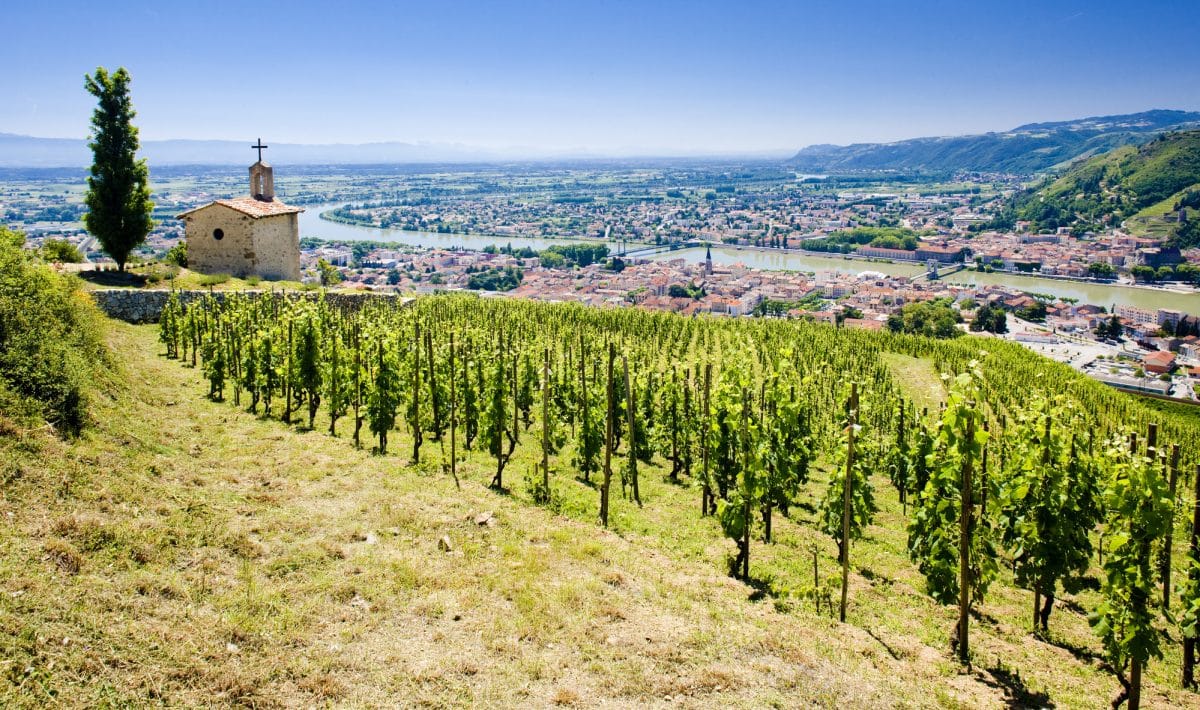First of all, some facts about the market. Based on the most recent figures, for the year 2022, the UK is the second largest export market for Rhône wines for both volume and value. The US is some distance ahead in terms of value and Belgium just edges ahead in volume. However, volumes in all top three markets are heading downwards year-on-year, with a 13% decrease in Belgium, 10% in the US and 9% in the UK.
The one bit of positive news here is that the reduction in value of Rhône Valley exported to the UK in 2022 was down just 2% - so we are buying fewer bottles, but at a higher price.
This drop in consumption is part of a long term pattern, with worldwide wine consumption trending downward since its peak in 2007, according to the OIV.
The elephant in the room for the Rhône Valley is it is primarily a red wine producing area (76% of the 2022 harvest) in a market that is falling out of love with red wine. Figures from France Agrimer suggest that in France, red wine consumption is continuing its steady fall, while rosé and, to a lesser degree white wines, are growing.
Given this backdrop, what can a region like the Rhône valley do to secure its future?
At the recent London tasting of Crus des Côtes du Rhône wines, I got the chance to ask two visiting winemakers about their experiences.
Case Study One: Château Boucarut
Maurice Goetschy runs Château Boucarut, a 20-hectare property with vines in Lirac and Tavel on the west bank of the Rhône. His wife’s Spanish father and Dutch mother bought the château and some accompanying vines in the mid-1990s. Maurice and wife Saskia were living in Luxembourg, but during a holiday visit in 2017 saw vines for sale within the Lirac Cru. Things moved faster than he had anticipated, and vineyard land prices were affordable, so in 2019 Goetschy had become a Rhône winemaker. The domain is run organically and they have taken up a few bio-dynamic practices – but Goetschy doesn’t necessarily see certification as part of their future plans.
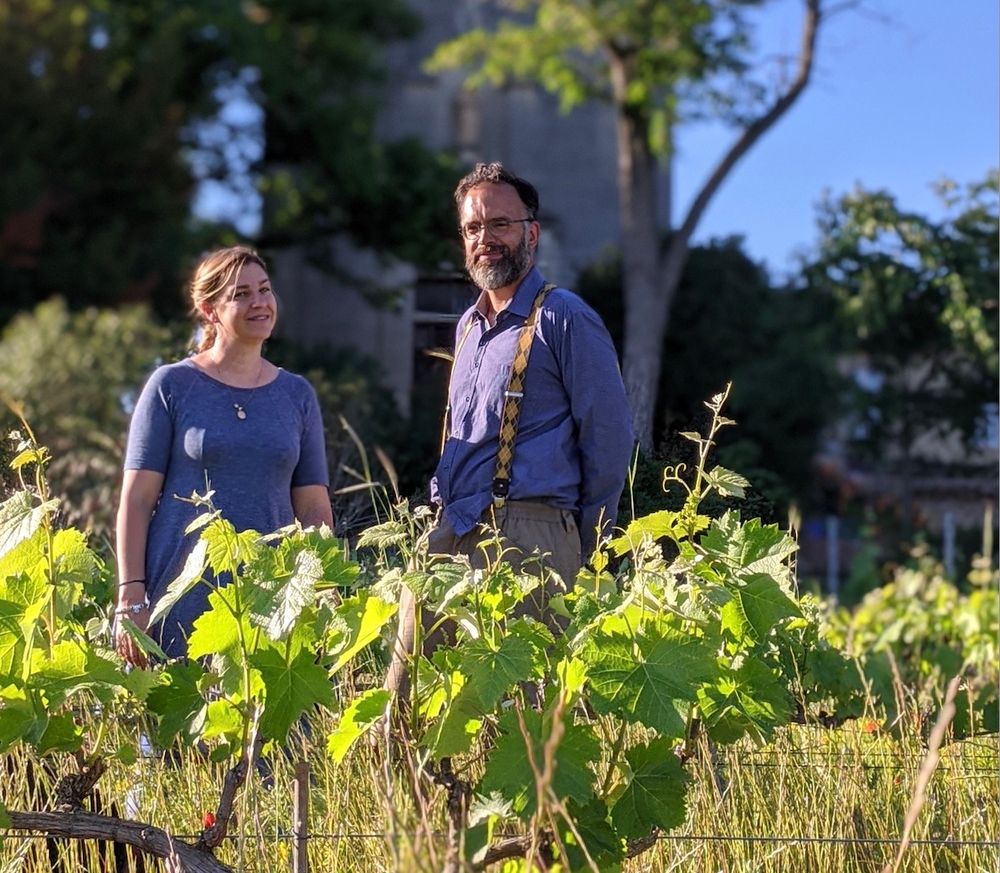
Saskia and Maurice Goetschy run a 20 hectare property at Château Boucarut
Lirac, though still predominantly a red wine area (87% of production), has the advantage of being able to make wine of all three colours within the rules of the appellation. It is currently one of only four southern Rhône Crus permitted to make white wine – the others are Châteauneuf-du-Pape, Vacqueyras and Cairanne, though they will soon be joined by Gigondas and then Lirac’s west bank neighbour, Laudun.
Goetschy feels the west bank has natural advantages when it comes to making the white and rosé wines that consumers are now favouring, as it gets more of the cooler morning sun and less of the warm afternoon sun than its east bank equivalents. The many areas of garrigue also help to cool the atmosphere.
“Rosé is always a good solution.” he says, though makes it clear he always keeps his best vines for red wines.
They also have a tiny (0.5 hectare) plot of vines in the unique and 100% rosé Cru of Tavel. You might think this was a gift in an environment where, especially in France, drinkers are increasingly drawn to the pink stuff. And yet Tavel, which must be deep in colour under the rules of the appellation, is a world away from the pale examples from neighbouring Provence.
How does Tavel compete in this world? According to Goetschy there is “hard work [needed] to educate consumers that colour has little to do with quality” for drinkers who think deep colour means sweet and/or cheap.
He adds: “We need to explain what’s special and practically unique about Tavel: beautiful wine pairings with spicy food, Asian food, oily fish. It’s a wine that you can drink cool, it’s refreshing, but at the same time has concentration and complexity.”
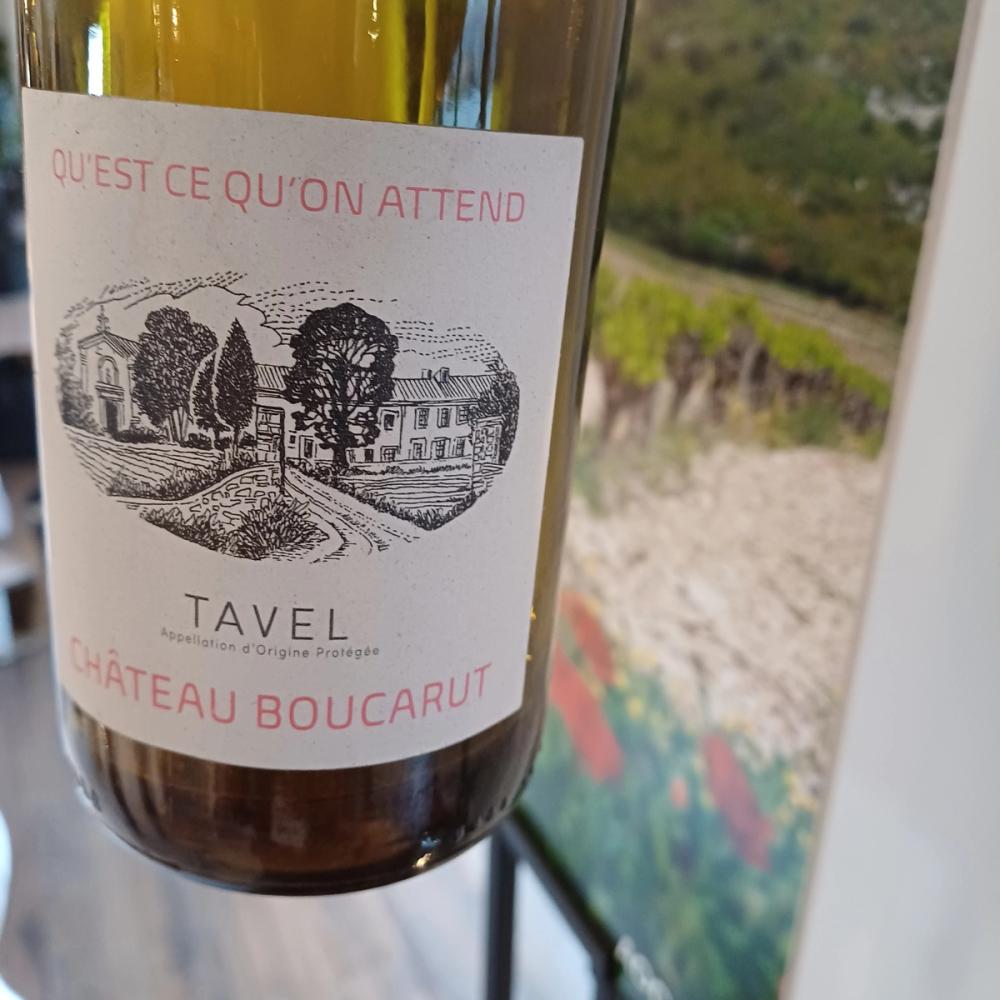
Château Boucarut has put a lot of faith in its distinct Tavel wines
Here is a wine style that has a natural fit with on-trade settings in the UK – provided there is an opportunity to prepare guests for what to expect.
On the question of how to face the challenge of consumers who are drinking less red, Goetschy sees two solutions.
One is to replant with new varieties – a process which can take 10-15 years to come to fruition. The other is to make its red wines lighter in style and therefore more appealing to today’s wine drinkers: picking earlier to increase freshness and have lower alcohol. A quick win, he thinks, is also to encourage people to drink their red wines at a lower temperature (say 14-16°C), which will naturally highlight a wine’s fruit and freshness.
Almost unbelievably, he doesn’t currently make rosé in Lirac – but is planning to in the future, from a plot of Mourvèdre which is more difficult to ripen for red wine. He anticipates a mostly Mourvèdre rosé, probably made via direct pressing, which will make for a paler rosé.
In contrast, for their Tavel they have a long (six to eight day) maceration. He, along with some other producers, has taken up the technique of whole bunch maceration pioneered by fellow Tavel producer, the renowned organic and biodynamic Château l’Anglore. This helps avoid extracting too much tannin over that long period with the skins.
I found Goetschy Tavel Château Boucarut “Qu’est ce qu’on attend?” 2023 to be definitely winey (or vinous if you must) with pink grapefruit, lipsmacking juicy, tannic berries and a neat, textured finish. It’s a serious wine, but with the built-in fun and enjoyment of a rosé. It is currently seeking a UK distributor.
Case Study Two: Claude Chabran
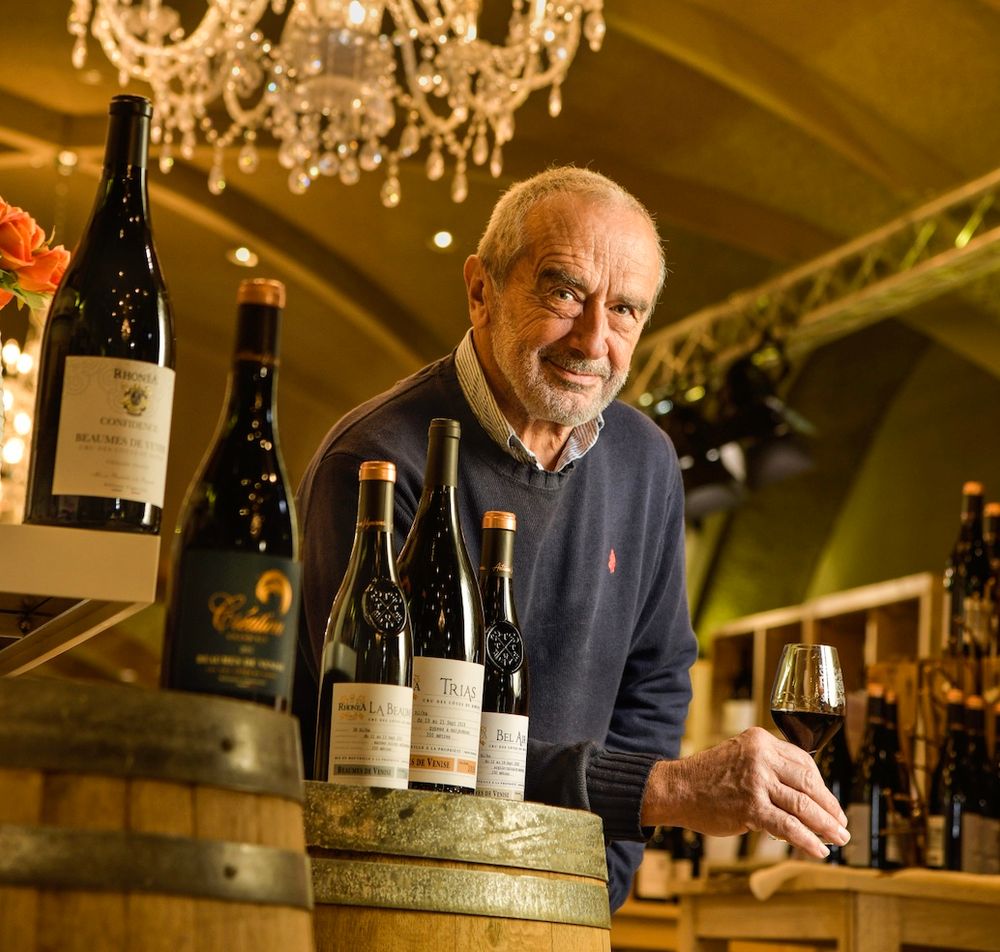
Claude Chabran is at the heart of winemaking in Beaumes-de-Venise
Claude Chabran has Beaumes-de-Venise in his blood. Born there, he is a long-time grower and now president of the dynamic Rhonéa wine co-operative, as well as being co-president of the interprofessions of both Beaumes-de-Venise and Muscat Beaumes-de-Venise.
Beaumes-de-Venise, in the southern foothills of the Dentelles de Montmirail, comprises two appellations: the sweet Vin Doux Naturel Muscat de Beaumes-de -Venise, and the much more recently created red wine only Cru of Beaumes-de-Venise.
Chabran’s initial career was in engineering and his first winemaking experience was not in France, but a rather makeshift one in Libya, while still in the construction industry. He returned to the family vineyard 23 years ago, to take over the 20-hectare domain from his father and has continued to work with the co-operative.
His father made only sweet Muscat, but Chabran has added red wines to the mix, which makes sense as consumption of Mucsat Beaumes-de-Venise is falling. Traditional drinkers of the style tend to be older; younger drinkers are yet to discover its charms.
He says: “People have to re-discover sweet wine. And you don’t need to like wine to like Vin Doux Naturel.”
This is true: these Muscat wines are light and sweet, with lots of fruity aromas – lychee, mango, white fruit. They pose no challenge to non-traditional wine drinkers and present an obvious choice for by the glass sales.
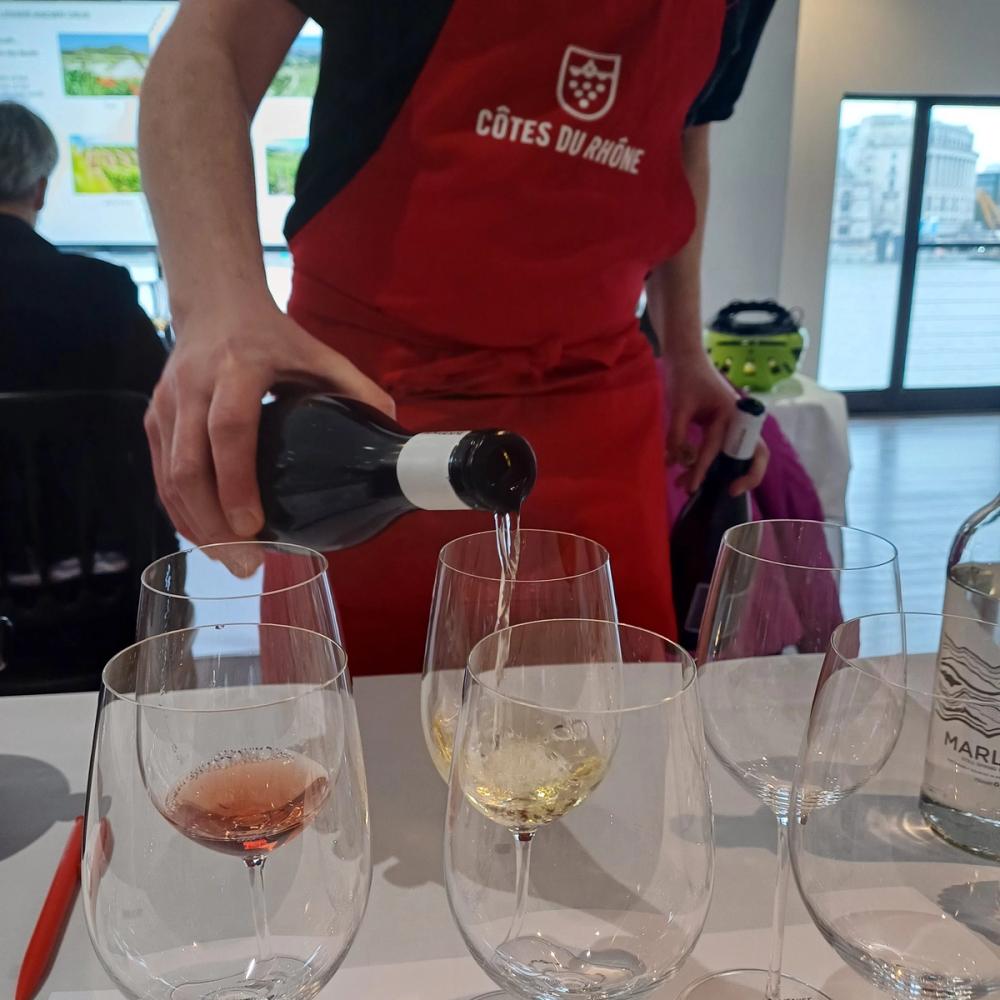
UK buyers had the chance to taste Rhône Valley wines at the recent London tasting
Beaumes de Venise red wine is probably still under the radar for many buyers of the Rhône but can therefore offer really good value.
Asked to describe its style, Chabran says: “Fruity and fresh, because of altitude.”
The average altitude for the red wines is 200m. This freshness was definitely on show in the example included in Matt Walls’ masterclass, Domaine de Piéblanc, Les Hauts 2021. The 50/50 blend of Grenache and Syrah had a nice chewiness, with dark juicy berries and generosity tempered with that hallmark freshness. It is imported into the UK by Wine Affairs.
One can’t help but wonder whether it was a good idea to use the same Beaumes-de-Venise name for the red wines, when it is so closely associated with sweet Muscats. However, as Chabran says: “The name Beaumes-de-Venise is memorable” which can never be a bad thing in wine.
Selling one-of-a-kind rosés, red wines and Vins Doux Naturels from the southern Rhône in the current climate is never going to be easy. But the toughest job is faced by producers at the bottom of the appellation pyramid in the Rhône, where production volumes are highest. Côtes du Rhône is 86% red production and Côtes du Rhône Villages 95.8% red, and together they accounted for 60% of overall production in 2022.
At the more elevated level of the Crus, they are in the relatively happy position of being able to charge higher prices for their more limited production wines.
